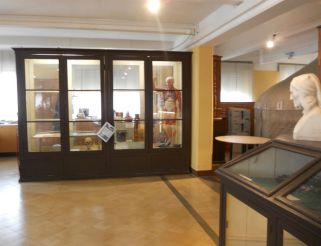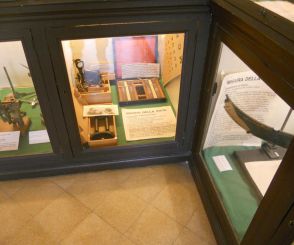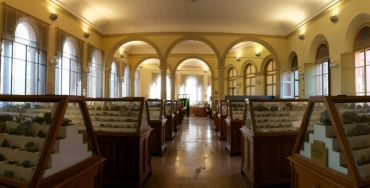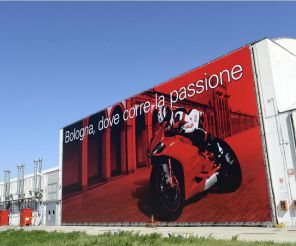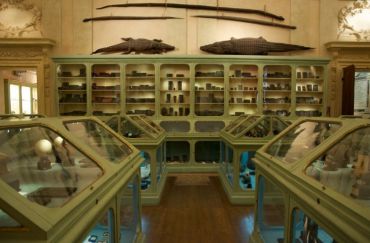Anthropology Museum, Bologna
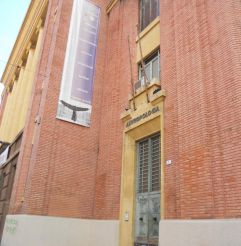
The Anthropology Museum (Museo di Antropologia) is a part of the Alma Mater Studiorum university museum system of the famous University of Bologna. It possesses many exhibits that demonstrate the main stages of the human evolution. A well-structured museum offers the visitor a variety of collections relating to different stages of the evolutionary process.
History of the museum
The museum was founded with the help of the Department of Anthropology of the University of Bologna in 1908. Both institutions were headed by Professor Fabio Frassetto. At first, it was housed in two halls of Palazzo Poggi, next to the department itself. But in 1933 the museum was moved to the Institute of Zoology where it was able to fully accommodate its growing collections. In 1947, the museum was closed for restoration, and reopened only in 1971, this time managed by Elsa Graffi Benassi. In the 1980s, museum spaces were radically reorganized, and in 1991 the renovated place reopened welcomed the visitors. In 2005, management responsibilities shited to Fiorenzo Facchini which positively impacted the museum’s development. Today the modern visitors will not feel discarded in the museum like they did a few decades ago.
Museum exhibition
The permanent exhibition exhibits many pieces found both in Italy and in other European countries which illustrate the development of prehistoric cultures from the Lower Paleolithic to the Neolithic. It is located on the first floor of the Institute of Zoology of the University of Bologna and structurally and thematically divided into 4 parts.
- Paleoanthropology and prehistory. The exhibition is dedicated to the evolution of humans and other primates. Numerous original findings enriched with ecological reconstructions and images lead the visitor through the most important places in the early history of mankind. Part of the route is devoted to some of the proto-historical objects found in Italy, and Emilia-Romagna in particular.
- Anthropometric instruments. In this section, there are numerous tools from the era of the foundation of the Institute of Anthropology. They introduce the guests to the research of biometric and standardizing aspects of anthropological studies conducted by Professor Fabio Frassetto at the time. Although research activity in this area boasts some new methods, some tools are still used in anthropological practice.
- Facial casts, busts, and models. These pieces were brought from private collections (Cipriani, Dumoutier, Tramond, Poch, Weninger) put together in the early 20th century to document various ethnic groups. Such models were especially widespread at that time in anthropological schools throughout Europe and were used for to reconstruct faces of famous personalities. There are also wall charts depicting different ethnic groups created in 1903 in Switzerland. This section exhibits a yurt, a typical dwelling of the semi-nomadic peoples of the steppes in Central Asia, acquired in 2000 through scientific cooperation between anthropologists of the University of Bologna, the National Museum of the Republic of Kazakhstan and the Kazakhstan Academy of Sciences.
- Skeleton biology and archeology. Human skeletons at different levels of development (from the fetus of several weeks to an adult) can be found here allowing to assess the changes associated with both growth and sexual dimorphism. Also, the collection has skeletal remains of people from different epochs that were sick with various diseases which greatly affected their backbone. Among them there are the oldest skeleton of a leper from the necropolis of Casalecchio di Reno (Bologna, 4th century BC), the skeletal remains of a person who had plague (1600, Parma), and a restored skeleton of an ancient Roman citizen (necropolis of Casalecchio di Reno, 2th century) whose pathological characteristics suggest they were using crutches.
How to get
The museum is located in the historic center, in the middle of the old and great buildings of the University of Bologna, on Via Francesco Selmi, 3. In the same building, there is the Zoology Museum, and the Observatory Museum and Palazzo Poggi can be found a little further away. They all belong to the same university system. The closest bus stop is Porta San Donato (routes 14, 20, 25, 28, 36, 89, 93, 99, 106, 211, 243, 301, 916).
Opening hours: from Monday to Friday from 09:00 to 13:00, on Saturday and Sunday from 10:00 to 18:00. From June to August, the museum is open from 10:00 to 13:00 from Monday to Friday. Contact number for more inquiries and booking: (+39) 051 2094196.
Admission: free. The tour will cost 2 euros for an adult and 1 euro for persons under 18. Educational material costs 5 euros.



